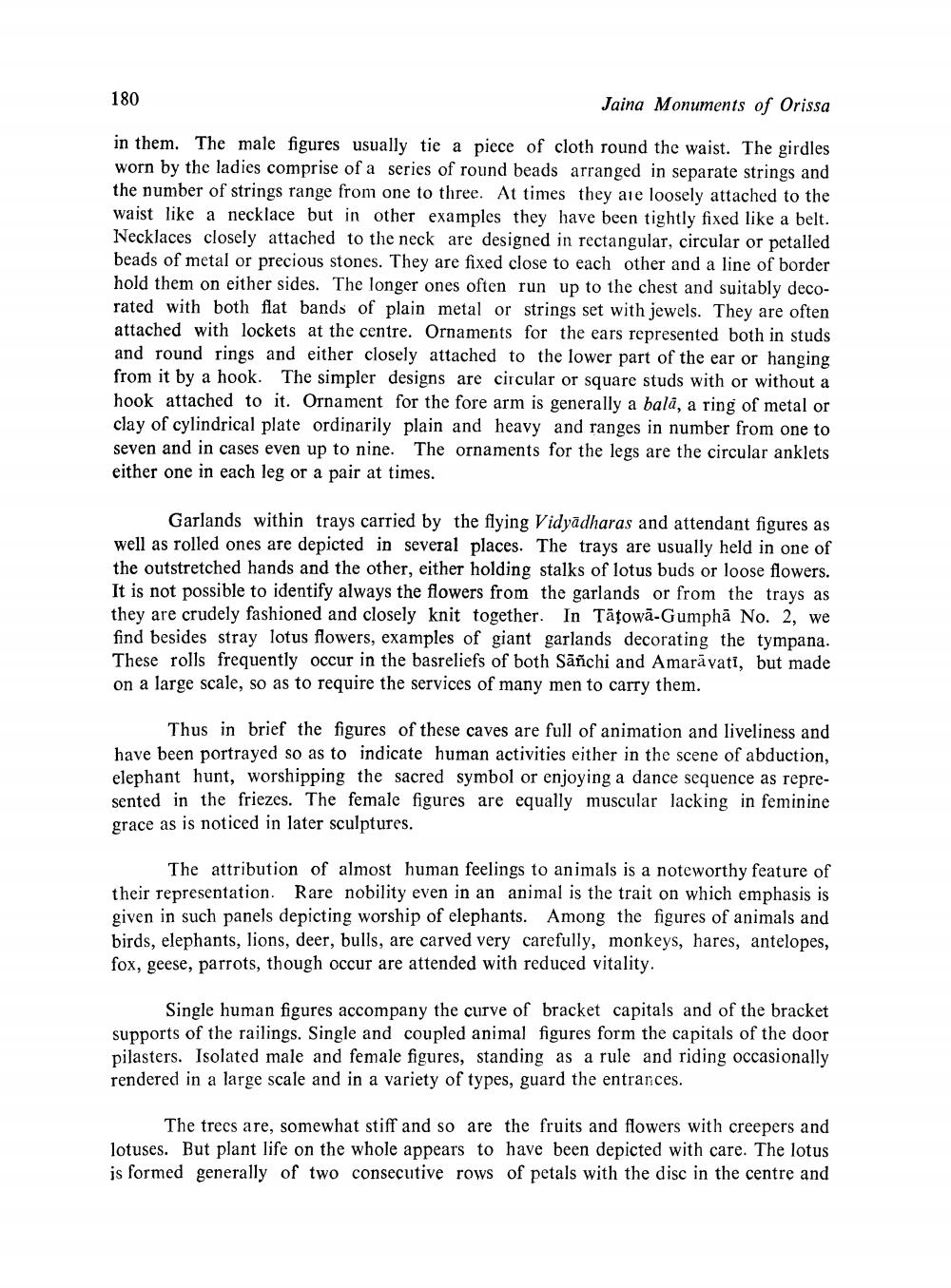________________
180
Jaina Monuments of Orissa
in them. The male figures usually tie a piece of cloth round the waist. The girdles worn by the ladies comprise of a series of round beads arranged in separate strings and the number of strings range from one to three. At times they are loosely attached to the waist like a necklace but in other examples they have been tightly fixed like a belt. Necklaces closely attached to the neck are designed in rectangular, circular or petalled beads of metal or precious stones. They are fixed close to each other and a line of border hold them on either sides. The longer ones often run up to the chest and suitably decorated with both flat bands of plain metal or strings set with jewels. They are often attached with lockets at the centre. Ornaments for the ears represented both in studs and round rings and either closely attached to the lower part of the ear or hanging from it by a hook. The simpler designs are circular or square studs with or without a hook attached to it. Ornament for the fore arm is generally a bala, a ring of metal or clay of cylindrical plate ordinarily plain and heavy and ranges in number from one to seven and in cases even up to nine. The ornaments for the legs are the circular anklets either one in each leg or a pair at times.
Garlands within trays carried by the flying Vidyadharas and attendant figures as well as rolled ones are depicted in several places. The trays are usually held in one of the outstretched hands and the other, either holding stalks of lotus buds or loose flowers. It is not possible to identify always the flowers from the garlands or from the trays as they are crudely fashioned and closely knit together. In Tätowā-Gumphā No. 2, we find besides stray lotus flowers, examples of giant garlands decorating the tympana. These rolls frequently occur in the basreliefs of both Sāñchi and Amaravati, but made on a large scale, so as to require the services of many men to carry them.
Thus in brief the figures of these caves are full of animation and liveliness and have been portrayed so as to indicate human activities either in the scene of abduction, elephant hunt, worshipping the sacred symbol or enjoying a dance sequence as represented in the friezes. The female figures are equally muscular lacking in feminine grace as is noticed in later sculptures.
The attribution of almost human feelings to animals is a noteworthy feature of their representation. Rare nobility even in an animal is the trait on which emphasis is given in such panels depicting worship of elephants. Among the figures of animals and birds, elephants, lions, deer, bulls, are carved very carefully, monkeys, hares, antelopes, fox, geese, parrots, though occur are attended with reduced vitality.
Single human figures accompany the curve of bracket capitals and of the bracket supports of the railings. Single and coupled animal figures form the capitals of the door pilasters. Isolated male and female figures, standing as a rule and riding occasionally rendered in a large scale and in a variety of types, guard the entrances.
The trees are, somewhat stiff and so are the fruits and flowers with creepers and lotuses. But plant life on the whole appears to have been depicted with care. The lotus is formed generally of two consecutive rows of petals with the disc in the centre and




